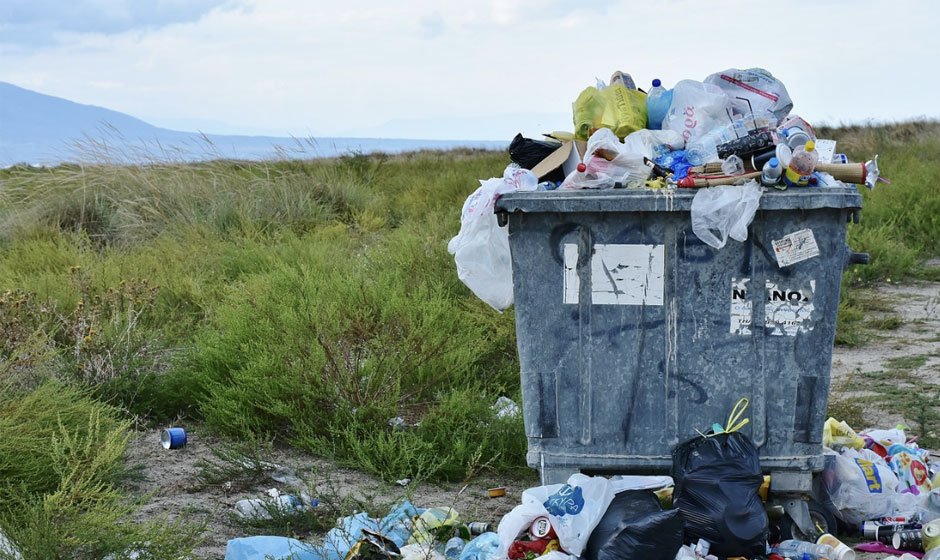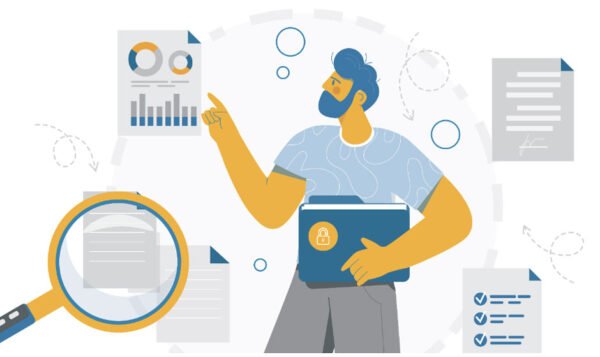Sustainable Innovations for The Leading Rubbish Removalists in Sydney

Australia continues to move forward with its “Strategy for Nature 2019-2030 and has made quite substantial progress over the past years. The principles of the ever-growing science have guided this overarching framework for all environmental legislation, policies, and strategies. And with a plethora of research and developments comes a new era of advanced technology that provides the best urgent solutions for these critical environmental challenges.
The country’s waste management system is at the heart of this challenge, which presents a pressing concern due to its underlying logistical issues. And a bustling metropolis, Sydney stands at the heart of this monumental environmental challenge. Faced with a burgeoning population, the city has generated substantial waste each year, demanding efficient and more sustainable management strategies.
The city’s conventional process involves a network of collection services, recycling facilities, and landfill sites. However, predominantly relying on landfills has raised concerns about environmental degradation, soil contamination, and greenhouse gas emissions. The recent global developments and increasing pressure to adopt sustainable practices in waste disposal have provided an opportunity for the city to innovate and reimagine its waste management strategies.
Evolution of Sustainable Practices in Waste Management
Sydney’s journey towards adopting eco-friendly initiatives in waste management has evolved significantly over time. Initially, Sydney waste management mirrored global norms, prioritizing convenience and cost-effectiveness without considering environmental factors. However, the detrimental environmental impacts of these practices began to surface, prompting a pivotal reevaluation.
The escalating environmental crisis, marked by climate change, depletion of natural resources, and pollution, catalyzed public and governmental concern. This is even further propelled by grassroots movements, environmental advocacy groups, and community-driven initiatives driving the discourse towards more sustainable solutions. This community engagement has compelled the regulatory bodies to introduce stringent policies aimed at curbing pollution by restructuring their approach to waste disposal.
These new regulations have forced various businesses in the industry to turn to technological advancements for viable alternatives to conventional practices. This further attention to eco-friendly solutions has sparked a surge in global innovations, including breakthroughs in recycling technologies, waste-to-energy processes, and advanced sorting methods.
These innovations are for all to embrace and leverage for companies and rubbish removalists seeking to differentiate themselves in the waste management industry. Capitalizing on sustainability may not be ideal, but integrating eco-friendly initiatives into businesses’ core operations is one step closer to the city’s sustainable future.
Recycling Programs Redefining Waste Management
Every year, the city produces around 800,000 tonnes of plastic waste, and only 10% gets recycled, while the rest end up in landfills. As such, environmental authorities have been establishing stricter policies and regulations on recycling approaches for waste disposal companies. To comply with these policies, rubbish removalists in Sydney have introduced comprehensive recycling programs designed to maximize resource recovery and minimize environmental impact. This commitment to sustainability has redefined the city’s waste management landscape, emphasizing the importance of diverting waste away from landfills.
The success of these programs lies in adequate waste segregation at the source and advanced recycling processes. You can also check out this site, ridlyrubbishremoval.com.au, for more information on comprehensive recycling initiatives that have been a common practice. Top removalists employ cutting-edge sorting technologies and streamlined collection systems to ensure the separation of recyclable materials, optimizing their value for the recycling industry.
In general, the government has initiated a Recycling Modernisation Fund (RMF) to provide funding to the states and territories under proper jurisdiction for relevant research and innovations that could improve recycling capacity in their locations. The funding stream is granted based on the discretion of the Federation Funding Agreement – Environment and National Partnership on Recycling Infrastructure.
Furthermore, this advancement has become a catalyst for significant technological progress, particularly among young scientists. Many have aligned their research efforts toward enhancing recycling rates and minimizing contamination in waste streams. They’ve developed automated systems capable of sorting plastic, metal, and glass by leveraging cutting-edge technologies such as the Internet of Things (IoT), sensing mechanisms, robotics, Artificial Intelligence (AI), and infrared spectroscopy. Moreover, these innovations facilitate the precise categorization of various types of plastic materials.
Other recycling innovations include micro-recycling, which encompasses a range of materials, including plastics, glass, timber, and electronic waste, and turn them into valuable materials. Other businesses have also employed technology to recycle e-waste using natural biomass and green chemistry to salvage precious metals.
The implementation of these high-tech recycling methods has yielded tangible outcomes, both in terms of waste diversion and environmental conservation. Statistics and figures depicting the improved volume of waste recycled, the reduction in greenhouse gas emissions, and the conservation of natural resources serve as a testament to the success of these programs. Indeed, technology paired with efficient collaboration between rubbish removal companies, local councils, and recycling facilities is instrumental in fostering successful recycling programs.
Waste-to-Energy Projects That Harness Renewable Resources
Striving to discover a sustainable waste-to-energy approach that minimizes its long-term environmental impact poses significant challenges. Traditional disposal of municipal non-recyclable materials, such as municipal solid, hazardous, and medical waste, is primarily done at dumpsites and landfills.
Pursuing more sustainable approaches to handling these toxic wastes has allowed various technological developments to emerge, turning these wastes into more usable materials, such as heat, energy, and gas. Energy from the waste method, for instance, is done through the process of incinerating waste at very high temperatures to produce heat or power.
However, incinerations produce a significant negative contribution to the local air quality as they release toxic chemicals that can be inhaled by humans and animals or deposited in the soil, surface water, and plants. These environmental implications of waste incineration have caused quite enough steer to start the discourse of more sustainable approaches to eliminate these toxic materials.
Thus, whilst targeting environmental objectives, the government’s EfW initiative faced community opposition due to concern about their long-term environmental impact. Their strategy to move them out of Sydney met even more significant criticism as citizens believed the potential problems caused by these incineration plants would still exist, just moved to different regions.
The following alternative has been claimed to be more eco-friendly, involving converting MSW, or municipal solid waste, to usable synthesis gas, or syngas, through the process of gasification. This process has addressed the negative impact that the EfW poses, such as toxic dioxins and furans forming during the incineration process. With gasification, the syngas undergoes prior cleaning, reducing the need for post-combustion emission controls seen in incineration.
The cleaned syngas can generate electricity or be processed into hydrogen, chemicals, or transportation fuels. Additionally, gasification complements recycling efforts by extracting metals and glass before processing MSW, thereby boosting recycling rates. It also utilizes plastics that are unfit for further recycling, converting them into high-energy feedstock for gasification.
Carbon-Neutral Approaches in Rubbish Removal Operations
Carbon neutrality is pretty much the ultimate goal of Australia’s environmental strategy, which involves reducing its overall impact on the environment. Businesses in various industries are the main drivers of this commitment, as they pursue strategies that reduce the emissions generated by their operations, supply chain, and product lifecycle. Sydney’s leading rubbish removalists are no exception to this noble venture.
Green practices for rubbish removal companies involve investing in fuel-efficient vehicles, transitioning to low-emission or electric vehicles in their fleets, optimizing routes to minimize travel distances, and employing eco-friendly packaging materials. Additionally, they implement office energy-saving measures, such as using renewable energy sources and adopting energy-efficient technologies.
More than work equipment and daily operations, carbon neutrality can be achieved by using carbon offset programs to neutralize the business’ residual emissions. These missions could involve tree planting initiatives, investing in renewable energy projects, and supporting forest conservation efforts.
The journey towards carbon neutrality isn’t without challenges. Adapting operations and investing in sustainable technologies can involve significant upfront costs. Limited availability and higher costs of eco-friendly vehicles or infrastructure may also pose barriers. Moreover, transitioning to green practices requires organizational culture and operations changes, which might encounter resistance or require additional staff training.
Nevertheless, these challenges are just roadblocks that are meant to be overcome. The strategic planning and financial investments required to address these challenges easily overshadow the environmental benefits associated with pursuing sustainable waste management processes.
Engaging the Community in Sustainable Waste Management
The community has long been a critical resource and stakeholder in the sustainable movement. Countless initiatives by the government and other environmental authorities in Sydney have launched multifaceted initiatives to educate and involve residents in sustainable waste management practices. These programs include awareness campaigns, workshops, seminars, and educational materials distributed through various channels, emphasizing the importance of waste segregation, recycling, and responsible disposal practices.
In their pursuit of carbon neutrality, rubbish removalists often partner with community groups, educational institutions, and non-profit organizations to conduct educational sessions, waste audits, and hands-on activities that raise awareness about waste reduction, recycling, and the significance of resource conservation. But more than that, events targeting the public are more than just for education purposes. They are also for instigating behavioral changes by cultivating a culture where waste reduction and proper disposal are seen as individual and collective responsibilities.
Emerging Trends and Forecasts in the Waste Management Industry.
The future of sustainable rubbish removal in Sydney is anticipated to witness a surge in innovative technologies and practices. Forecasts suggest a greater reliance on advanced sorting technologies, AI-driven waste segregation, and the proliferation of waste-to-energy projects to harness renewable resources. Moreover, a shift towards circular economy models, emphasizing resource recovery and closed-loop systems, is expected to gain momentum.
Furthermore, integrating innovative waste monitoring systems, robotics, and blockchain technology is projected to optimize waste collection, enhance recycling efficiency, and minimize environmental impact. However, while these initiatives offer promising solutions, their adoption faces the risk of resistance due to their upfront costs, limitations on the infrastructure, and the need for upskilling among the workforce. Overcoming these challenges would require strategies that foster stronger partnerships among stakeholders and regulatory bodies to ensure feasible policies are established and proactive compliance is met.



